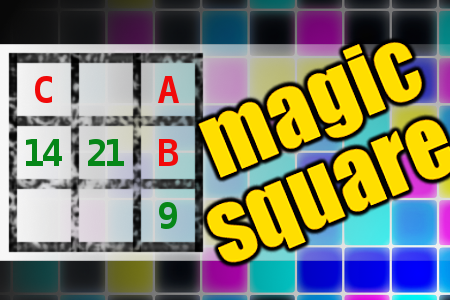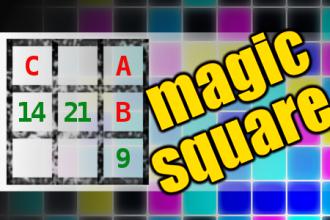MAGIC SQUARE: Calculate A*B-C
The aim is to place the some numbers from the list (7, 9, 14, 19, 21, 26, 28, 66, 68, 73, 83) into the empty squares and squares marked with A, B an C. Sum of each row and column should be equal. All the numbers of the magic square must be different. Find values for A, B, and C. Solution is A*B-C.Correct answers: 7
The first user who solved this task is Nasrin 24 T.
#brainteasers #math #magicsquare

Two men, one American and an I...
Two men, one American and an Indian were sitting in a bar drinking shot after shot.
The Indian man said to the American, "You know my parents are forcing me to get married to this so called homely girl from a village whom I haven't even met once. We call this arranged marriage. I don't want to marry a woman whom I don't love... I told them that openly and now have a hell lot of family problems."
The American said, "Talking about love marriages... I'll tell you my story. I married a widow whom I deeply loved and dated for 3 years. After a couple of years, my father fell in love with my step-daughter and so my father became my son-in-law and I became my father's father-in-law. My daughter is my mother and my wife my grandmother.
More problems occurred when I had a son. My son is my father's brother and so he is my uncle. Situations turned worse when my father had a son. Now my father's son i.e. my brother is my grandson. Ultimately, I have become my own grand father and I am my own grandson. And you say you have family problems?"
The Indian man said to the American, "You know my parents are forcing me to get married to this so called homely girl from a village whom I haven't even met once. We call this arranged marriage. I don't want to marry a woman whom I don't love... I told them that openly and now have a hell lot of family problems."
The American said, "Talking about love marriages... I'll tell you my story. I married a widow whom I deeply loved and dated for 3 years. After a couple of years, my father fell in love with my step-daughter and so my father became my son-in-law and I became my father's father-in-law. My daughter is my mother and my wife my grandmother.
More problems occurred when I had a son. My son is my father's brother and so he is my uncle. Situations turned worse when my father had a son. Now my father's son i.e. my brother is my grandson. Ultimately, I have become my own grand father and I am my own grandson. And you say you have family problems?"

